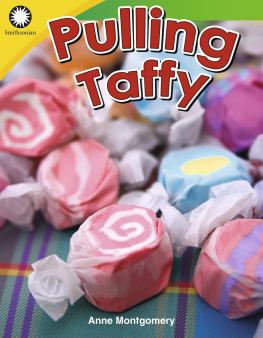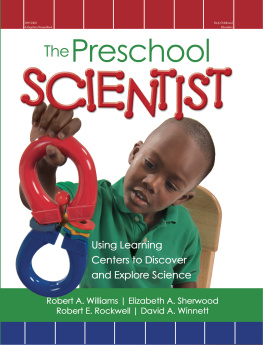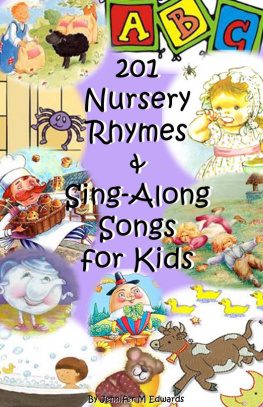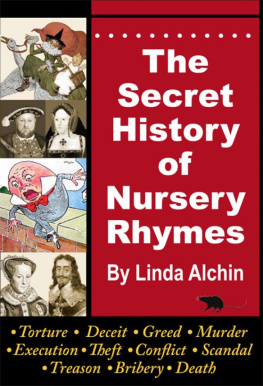
HANDS-ON STEAM EXPLORATIONS FOR YOUNG LEARNERS
HANDSON STEAM EXPLORATIONS FOR YOUNG LEARNERS GRADES PRE-K-2
PROBLEM-BASED INVESTIGATIONS FOR PRESCHOOL TO SECOND GRADE
ALLISONBEMISS

First published in 2018 by Prufrock Press Inc.
Published 2021 by Routledge
605 Third Avenue, New York, NY 10017
2 Park Square, Milton Park, Abingdon, Oxon OX14 4RN
Routledge is an imprint of the Taylor & Francis Group, an informa business
Copyright 2018 by Taylor & Francis Group
Cover design by Marjorie Parker and layout design by Allegra Denbo
Illustrations by Micah Benson
All rights reserved. No part of this book may be reprinted or reproduced or utilised in any form or by any electronic, mechanical, or other means, now known or hereafter invented, including photocopying and recording, or in any information storage or retrieval system, without permission in writing from the publishers.
Notice:
Product or corporate names may be trademarks or registered trademarks, and are used only for identification and explanation without intent to infringe.
ISBN 13: 978-1-0321-4257-9 (hbk)
ISBN 13: 978-1-6182-1746-2 (pbk)
DOI: 10.4324/9781003235507
TABLE OF CONTENTS
Guide
INTRODUCTION
Encouraging Big Ideas From Little Learners
DOI: 10.4324/9781003235507-1
OVERVIEW
Young children are natural scientists. Little learners play, explore, and test with wonder as a guide to learning. In order to encourage innovative thinking, we must offer our youngest learners opportunities to nurture these skills while solving problems. This book, Hands-On STEAM Explorations for Young Learners, shares 10 STEAM (science, technology, engineering, arts, and mathematics) investigations based on popular nursery rhymes that little learners (and adults) know and love. Several critical factors, such as learning environment, growth mindset, innovation strategies, personalized learning, and early childhood standards, should be considered to effectively reach the unique needs of each young learner.
ENVIRONMENTS FOR EXPLORING
Physical Environment
The physical environment of an early childhood classroom should be one that allows the child to be as independent as possible. We want to be sure that materials, tools, tables, and chairs are at the appropriate level. First and foremost, ensure that all materials, including those used in STEAM investigations, are appropriate for students ages 3 and up. The nursery rhyme-themed challenges in the 10 lessons in this book all provide the opportunity for students to make age-appropriate choices as they plan, design, and create.
One way to help students is by organizing materials so that they can easily see in a very concrete way what they are selecting. For example, rather than circling on a piece of paper the materials they will use, let them first actually see (and touch, if necessary) the materials they have access to. (See the Teacher's Lesson Guide for more information on how to organize materials within each lesson.) Labeling with pictures and words is also an important component for the early childhood classroom. This not only promotes literacy, but also helps the little learner be more independent as he or she selects materials and cleans upwhich brings us to the last, but most important, point of this section. We want students to be responsible for as much of the cleanup as safely possible; therefore, they will need access to brooms, dustpans, water, sponges, and other cleaning materials. The students need to "own" their classroom. Learning to take care of their environment is a part of building responsibility and creating a sense of community.
The students need to "own" their classroom. Learning to take care of their environment is a part of building responsibility and creating a sense of community.
STEAM Investigation Guidelines
STEAM investigation guidelines and lab safety are critical components of the classroom environment. When working with young learners, make safety as clear and easy to understand as possible. Posting the following guidelines in the classroom and reviewing them prior to each lesson will help students remember how to play and explore safely:
L: Learn by exploring!
(Trying and failing is learning; failing to try is not.)
A: Always keep materials away from your eyes, nose, mouth, and hands.
(As needed, wear safety goggles and gloves to keep your body safe.)
B: Be aware.
(Notice what's happening around you.)
Emotional Environment
The emotional environment of a classroom is very important to learning, and this is especially true in STEAM challenges like those in this book. Students will be required to share, collaborate, and communicate in every investigation in this book. This is an important lifelong skill for our young learners to begin practicing. In order to make this happen, students need to be working in an environment that supports their needs. If we think of Maslow's Hierarchy of Needs (1943), we know that students need to first feel safe and secure before they can advance to the higher levels of thinking. Our little learners need a sense of belonging in the classroom. Life in a Crowded Place by Ralph Peterson (1992) shared many ways that we, as educators, can make a learning community. Peterson suggested that teachers should facilitate their classroom to be more like a family. Two ideas in particular he discussed involve creating routines and celebrations to help build a community of learners. Each of the nursery rhyme challenge investigations offers an opportunity for learners to follow a specific routine and communication pattern, like the curiosity catchphrases and partner talks. There are also celebrations of learning that occur during each lesson as the students share their creations or thinking. For example, each time a lesson calls for a Scientist Stroll (see the Teacher's Lesson Guide), this is a celebration of new learning. It is important to communicate these celebrations of learning with students.
Be an engineer (or scientist, artist, mathematician, etc.). Several lessons instruct the teacher to encourage children to do things like "put on engineer eyes" or "listen with engineer ears." These phrases help the students understand that engineers (and scientists, mathematicians, and artists) use their senses to make observations, solve problems, and create. We also want to encourage students to see themselves in these roles; therefore, telling them to become a STEAM professional in this simple way helps to create a community of scientific thinkers, makers, and problem solvers.
Mistake Makers and Innovative Thinkers
Mistakes mean you are learning, but it doesn't always feel this way. Even to young students, mistakes feel negative. You can help change this thinking in two simple ways:
- Celebrating mistakes as learning and sharing your own mistakes. Young students learn so much from what we model, both intentionally and unintentionally.
- Giving feedback to students by placing the value on thinking rather than knowing. You can do this by having students share examples of mistakes they made and what they learned, rather than only sharing what they learned. This simple change can completely change the class mindset on mistakes.
Next page







